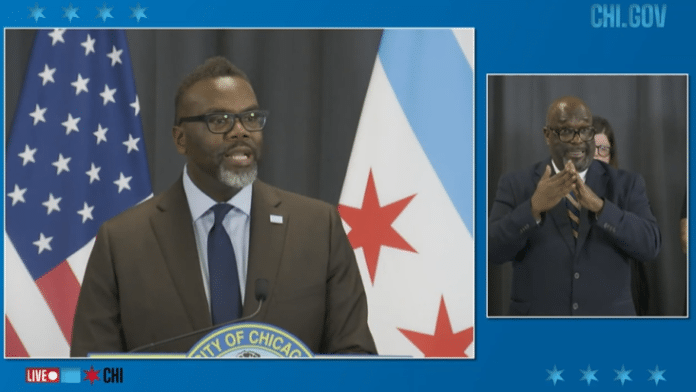Chicago Construction News staff writer
The City of Chicago this week released findings from a 15-month process to develop a “cumulative impact assessment” to determine how environmental burdens impact various communities cross the city.
“The assessment confirmed what we already knew,” said Mayor Brandon Johnson, “that neighborhoods like Austin, East Garfield Park, Eaglewood, Humble Park, Pullman, North Londale, Little Village, McInley Park, South Chicago and South Dearing are some of the most burdened by pollution and the effects of environmental exposures.
“But now we have a roadmap to combat those inequities.”
The assessment includes dozens of policy changes and spending that Johnson said could be implemented such as expanding the city’s community air monitoring network and increase community benefits like trees and vacant lot greening projects.
Also, the city could make changes to municipal codes and regulations through updates to zoning for manufacturing, waste-related and other industrial uses. Advancing environmental justice “will require the full power of city government,’ the mayor said.
“As mayor of the City of Chicago, the full power will be administered under my leadership.” The report has four key components:
The report has four key components:
- A Community Input Summary and Overview of Community Input Provided During Assessment which include a qualitative analysis of community comment provided on City plans and actions in recent years, as well as feedback gathered through various engagement events conducted this summer.
- A Chicago Environmental Justice Index(Chicago EJ Index) and Map that identifies EJ neighborhoods – Chicago communities that are most burdened by pollution and most vulnerable to its effects based on environmental exposures and conditions, sensitive populations and socioeconomic factors at the census tract level. These communities include Austin, East Garfield Park, Englewood, Humboldt Park, Lower West Side, McKinley Park, New City, North Lawndale, Roseland, South Deering, South Lawndale, West Englewood and West Garfield Park.
- An Environmental Justice Action Plan that includes dozens of specific, actionable policy changes that can be implemented now based on current municipal codes and authorities. A few key examples from the Plan, which was developed in partnership with more than 10 city departments, include commitments to
- Expand the city’s community air monitoring network (Public Health)
- Implement recommendations from the Southwest Industrial Corridor Transportation Study to minimize the impact of trucks and heavy vehicles on streets, restrict truck traffic, manage truck parking and idling, expand the 3-1-1 system for truck complaints, incorporate emission reduction goals into transportation planning, and establish freight health metrics (Transportation)
- Create new/update industry-specific operational rules for businesses that create the greatest community impacts (Public Health)
- Increase community benefits, such as trees, vacant lot greening and expanded waste collection (Streets and Sanitation)
- Propose updates to zoning regulations for manufacturing, recycling, waste-related, and other intensive industrial uses (Planning & Development)
- Recommendations to inform the development of an EJ & Cumulative Impact Ordinance that would establish new governance structures, authorities, and resources to protect neighborhoods more fully from the cumulative impact of environmental burdens. Recommendations include mandates that the city consider environmental, health and social stressors in its decision-making and new requirements to ensure that people who live in these neighborhoods benefit directly from local development.
Key next steps include advancing the proposed policy and implementing practice changes; additional quantitative data gathering and analysis, to be displayed in a public-facing data dashboard; and continued and strengthened community engagement. The co-governance approach employed during the Assessment will extend into this next phase of work, with OCEE and CDPH working with the EEWG to make decisions together and ensure ongoing.






